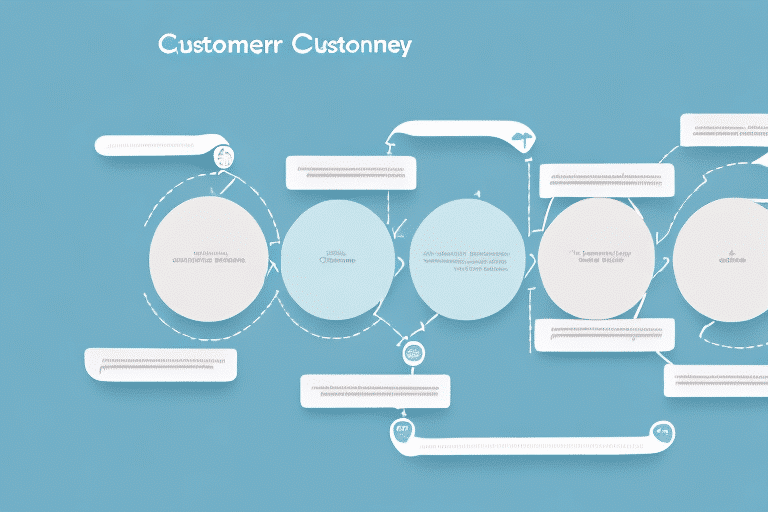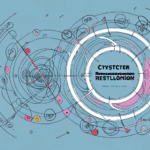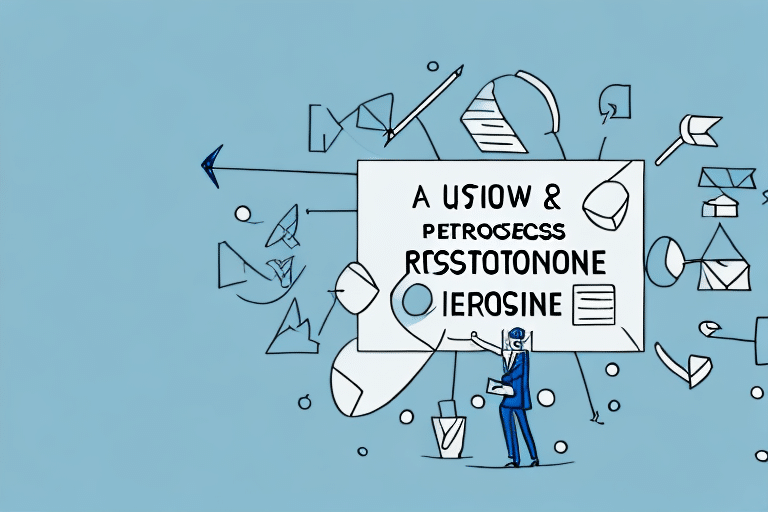Maximizing Customer Retention at the Journey Retention Stage
In the ever-changing world of business, retaining customers has never been more critical to success. The journey retention stage is the phase in which businesses can engage with customers and maintain their loyalty. Understanding the concept of customer retention and the importance of maximizing it at the journey stage is vital.
Understanding the Concept of Customer Retention
Customer retention refers to the process of maintaining relationships with customers, ensuring they keep coming back for more. It is a vital part of the customer lifecycle, especially at the journey retention stage. Retaining customers is cheaper than acquiring new ones, with studies showing that increasing customer retention rates by just 5% can lead to a profit increase of 25% to 95% (Bain & Company).
One of the key strategies for customer retention is providing excellent customer service. This includes responding promptly to customer inquiries and complaints, offering personalized recommendations, and going above and beyond to exceed customer expectations. By providing exceptional customer service, businesses can build trust and loyalty with their customers, leading to increased retention rates and long-term success.
The Importance of Maximizing Customer Retention
Maximizing customer retention is crucial for long-term business success. Customers who return repeatedly are invaluable, and the cost of acquiring new ones is significantly higher. Retaining customers also enhances brand loyalty and improves customer lifetime value, benefiting both the customer and the business.
Strategies to maximize customer retention include:
- Exceptional Customer Service: Training employees to be friendly, helpful, and responsive.
- Personalized Promotions: Offering tailored rewards and incentives to loyal customers.
- Engagement Programs: Implementing loyalty programs that reward repeat business.
When customers feel valued and appreciated, they are more likely to continue doing business with your company, thereby enhancing retention rates.
The Journey Retention Stage: What It Is and Why It Matters
The journey retention stage refers to the phase after a customer’s initial purchase. It’s a critical period when businesses need to focus on maximizing customer retention. During this stage, customers evaluate their experience and decide whether to continue their relationship with the business. A positive experience can result in loyal, repeat customers.
Gathering Customer Feedback
During the journey retention stage, businesses can gather valuable feedback from customers. This feedback helps improve the overall customer experience and address any issues that may have arisen during the initial purchase. Actively seeking feedback and making necessary improvements increases customer satisfaction and loyalty.
Upselling and Cross-Selling Opportunities
The journey retention stage provides an opportunity for businesses to upsell or cross-sell additional products or services that may interest the customer, thereby increasing the average transaction value and enhancing the customer’s relationship with the brand.
Key Strategies for Nurturing Customer Relationships
To nurture customer relationships during the journey retention stage, businesses can employ several effective strategies:
- Personalized Experiences: Tailoring interactions based on customer data.
- Loyalty Programs: Offering rewards and incentives for repeat business.
- Customer Data Utilization: Retaining and analyzing customer data to improve future interactions.
A customer-centric approach during this phase can drastically improve the chances of retaining customers.
Implementing Loyalty Programs and Rewards
Loyalty programs incentivize customers to continue doing business with the company and make them feel valued. According to a Gartner report, 89% of companies compete primarily on customer experience, and loyalty programs are a key component of this strategy.
Additionally, using customer feedback and surveys helps gather insights into customer needs and preferences, allowing businesses to tailor future interactions and improve overall satisfaction.
Personalization: The Key to Successful Customer Retention
Personalization involves using customer data to create customized experiences that meet their unique needs. It is a crucial strategy for maximizing customer retention at the journey stage. By tailoring messaging and offerings to each customer, businesses improve engagement, trust, and loyalty.
Studies have shown that 80% of customers are more likely to make a purchase from a brand that offers personalized experiences (Segment). Personalization helps businesses stand out from competitors and attracts new customers.
Using Data to Identify Your Most Valuable Customers
Data analysis is critical to understanding and identifying high-value customers. Businesses can segment customers, understand their specific needs, and create tailor-made retention strategies. By identifying top-tier customers through engagement and value scores, businesses can allocate resources efficiently.
Analyzing Purchase History
By examining the frequency and amount of purchases, businesses can determine which customers are the most profitable and loyal. This information can be used to create personalized offers and incentives to keep these customers coming back.
Leveraging Customer Feedback and Reviews
Analyzing feedback and reviews provides insights into what customers value most about products or services. This information can be used to improve the customer experience and develop targeted retention strategies for high-value customers.
Implementing Loyalty Programs and Incentives
Loyalty programs, referral discounts, and reward points are highly effective strategies for customer retention during the journey phase. These incentives create an emotional connection to the business and provide a sense of exclusivity, making customers more likely to return.
Moreover, loyalty programs provide valuable data and insights into customer behavior and preferences. By tracking purchases and rewards redemption, businesses can better understand what motivates their customers and tailor their marketing strategies accordingly.
Leveraging Social Media for Enhanced Engagement
Social media is an integral part of modern business and plays a vital role in enhancing customer retention. Businesses can use social media platforms to engage with customers, share information, and offer personalized experiences. Social media fosters a sense of community and emphasizes the importance of two-way communication.
Additionally, social media analytics provide valuable insights into customer behavior and preferences. By analyzing this data, businesses can gain a better understanding of their audience and tailor their marketing strategies to increase customer satisfaction and loyalty.
The Role of Customer Feedback in Enhancing Retention
Customer feedback is essential for gaining insights into customer satisfaction and identifying areas for improvement. Businesses can use customer feedback to refine retention strategies and build brand loyalty. Utilizing feedback helps customers feel that their opinions matter, driving them to continue doing business with you.
Moreover, customer feedback can help identify potential issues or pain points in the customer journey. By addressing these areas, businesses can create a smoother and more enjoyable customer experience, leading to increased satisfaction and retention.
Measuring and Analyzing Customer Retention Metrics
Measuring and analyzing customer retention metrics is a crucial step in optimizing the customer experience. Businesses must define key performance indicators (KPIs), track customer engagement, and analyze the data to enhance retention strategies continuously.
Effective methods to measure retention include:
- Tracking customer behavior and interactions with the brand.
- Monitoring engagement with marketing campaigns and social media.
- Regularly soliciting and analyzing customer feedback.
By identifying patterns and trends in customer behavior, businesses can adjust their retention strategies to better meet customer needs.
Case Studies: Successful Customer Retention Strategies
Various companies have successfully implemented customer retention strategies at the journey stage. These real-life examples provide valuable insights that other businesses can replicate to optimize their customer experience for ultimate satisfaction.
Personalized Communication
One example is Amazon, which uses personalized email campaigns and product recommendations based on previous purchases, making customers feel valued and understood.
Exceptional Customer Service
Another example is Zappos, renowned for its outstanding customer service. Their commitment to training customer service representatives to be knowledgeable and responsive has led to high customer loyalty and retention rates.
Conclusion: Keys to Successful Customer Retention
To maximize customer retention at the journey stage, businesses must focus on providing an excellent customer experience, personalizing interactions, implementing loyalty programs, leveraging social media, utilizing customer feedback, and analyzing key metrics. Understanding the importance of customer retention and employing these strategies can improve the chances of retaining loyal customers and driving long-term business success.
Additionally, it is essential for businesses to continuously adapt and evolve their retention strategies to meet the changing needs and preferences of their customers. This involves staying up-to-date with industry trends, regularly collecting and analyzing customer feedback, and being open to new approaches. By remaining flexible and responsive to customer needs, businesses can build stronger relationships with their customers and increase their chances of retaining them over the long term.




















